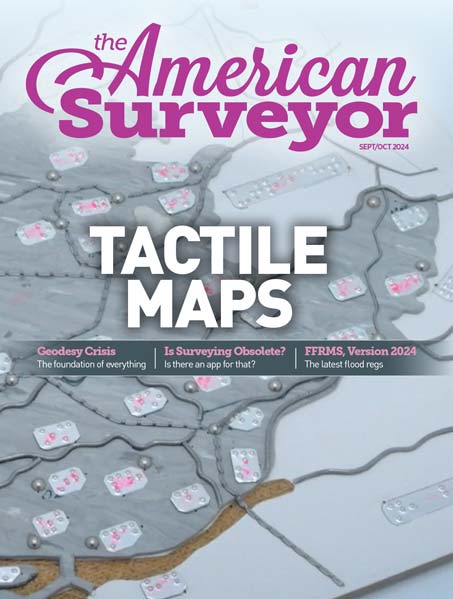(GISuser.com Feature) On May 14, 1804, Capt. Meriwether Lewis and Lt. William Clark, charged by President Thomas Jefferson with finding a route to the Pacific Ocean, embarked from Camp Dubois, Ill., on the east bank of the Mississippi River, upstream from St. Louis. Read on for some interesting related facts and figures from the US Census Bureau.
They were accompanied by a 33-member group skilled in botany, zoology and outdoor survival. The “Corps of Discovery” arrived at Oregon’s Pacific coast in November of 1805 and returned to St. Louis on Sept. 23, 1806.
To commemorate the Lewis and Clark expedition, as well as the Louisiana Purchase, the U.S. Mint over the next two years will produce four versions of a redesigned Jefferson nickel. The new designs will replace Jefferson’s home, Monticello, on the coin’s reverse side. The first version, shipped to commercial banks earlier this month, features a design similar to the original Jefferson Peace Medal commissioned for the Lewis and Clark expedition. Lewis and Clark handed out these medals as tokens of goodwill to American Indians they met along their route. Later this year, a second Jefferson nickel will be issued, depicting the boat Lewis and Clark used on their expedition.
The Westward Journey
39 million
The most recent estimate of the total population of the states that Lewis and Clark traversed from 1804 to 1806.
Image courtesy of David Rumsey Map collection: Lewis and Clark Expedition 200th anniversary mosaic
Following is a list of the 11 states through which the Lewis and Clark trail passes, along with their current populations and the earliest census counts for the areas that became the present states.
|
2003
|
Earliest
|
|
|---|---|---|
| Illinois |
12.7 mil.
|
12,300 (1810)
|
| Missouri |
5.7 mil.
|
19,800 (1810)
|
| Kansas |
2.7 mil.
|
107,200 (1860)
|
| Nebraska |
1.7 mil.
|
28,800 (1860)
|
| Iowa |
2.9 mil.
|
43,100 (1840)
|
| South Dakota |
764,000
|
4,800 (1860)
|
| North Dakota |
634,000
|
2,400 (1870)
|
| Montana |
918,000
|
20,600 (1870)
|
| Idaho |
1.4 mil.
|
15,000 (1870)
|
| Washington |
6.1 mil.
|
1,200 (1850)
|
| Oregon |
3.6 mil.
|
12,100 (1850)
|
Note: The census counts exclude all American Indians through 1850 and include only a small proportion of the American Indian population in 1860 and 1870. [PDF]
1
Number of places named “Lewis and Clark.” That place is Lewis & Clark Village, Mo. (near St. Joseph), which had a population of 152 in 2002.
6
Within the states that Lewis and Clark traversed on their way to the Pacific, the number of places named Jefferson. They are: Jeffersonville, Ill.; Jefferson, Iowa; Jefferson City, Mo.; Jefferson, S.D.; Jefferson City, Mont.; and Jefferson, Ore.
164,000
The 2002 American Indian and Alaska native population in Washington, highest of any of the states Lewis and Clark crossed. There are a total of 4.3 million American Indians and Alaska natives nationwide. A number of native Americans accompanied the Lewis and Clark expedition. In addition, the group explored several American Indian homelands during its journey.
12,000
Number of Shoshone Indians nationwide. A Shoshone Indian, Sacagewea, served as the guide for the expedition. (This number refers to those who are part of the Shoshone tribal grouping alone or in combination with another tribal grouping or race.)
153,400
Number of Sioux Indians in the United States today. At the time of the Lewis and Clark expedition, the Sioux nation was the most powerful tribe on the Great Plains. (This number refers to those who are part of the Sioux tribal grouping alone or in combination with another tribal grouping or race.)
6,500
The current population of the Nez Perce tribe. This tribe played a critical role in the survival of the Lewis and Clark expedition, serving as gracious hosts when the expedition reached its homeland in 1805.
Life in 1804
18 miles west of Baltimore
Location of the mean center of population of the United States in 1800. The mean center was in what is now Howard County, Md. — a shift of 41 miles from 1790 when it was 23 miles east of Baltimore in Kent County, Md. America’s move west would continue through the decade, advancing in 1810 to Loudoun County, Va., 40 miles west-northwest of Washington, D.C. In 2000, the center had moved to nearly three miles east of Edgar Springs, Mo., which is west of Lewis and Clark’s starting point.
5.3 million
The total number of U.S. residents counted in the 1800 census. The census count in 2000 was 281.4 million — more than 50 times higher than the 1800 count.
|
From time to time, special editions of the U.S. Census Bureau’s Facts for Features are issued to commemorate anniversaries or observances or to provide background information for topics in the news. Below is a listing of previous such editions: U.S. Armed Forces and Veterans (April 10, 2003) Source: Facts and figures derived from US Census Bureau |
